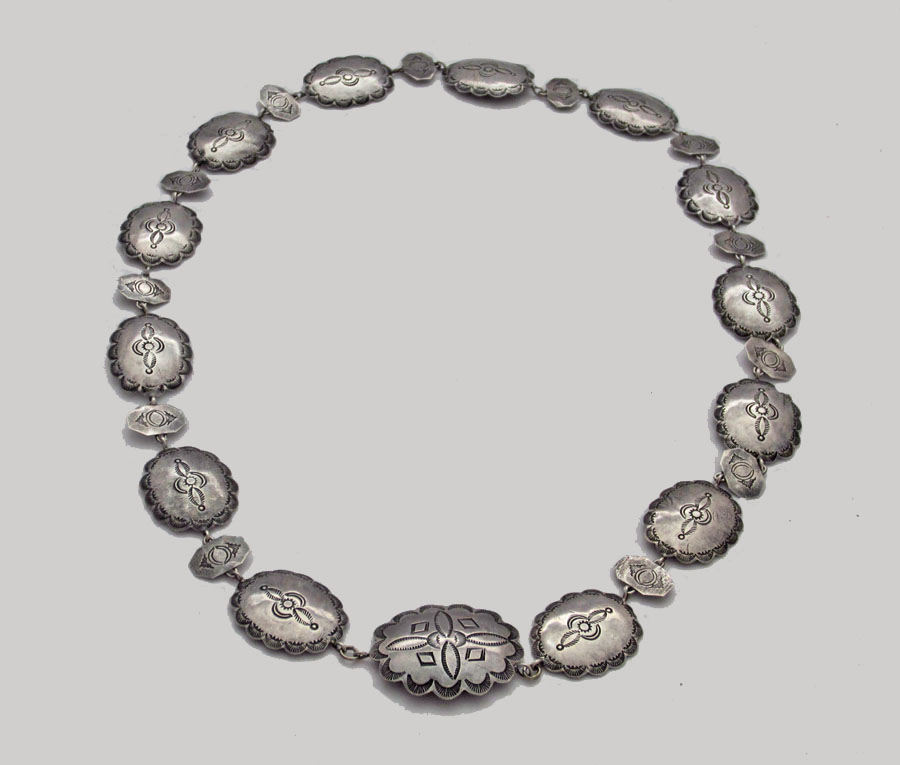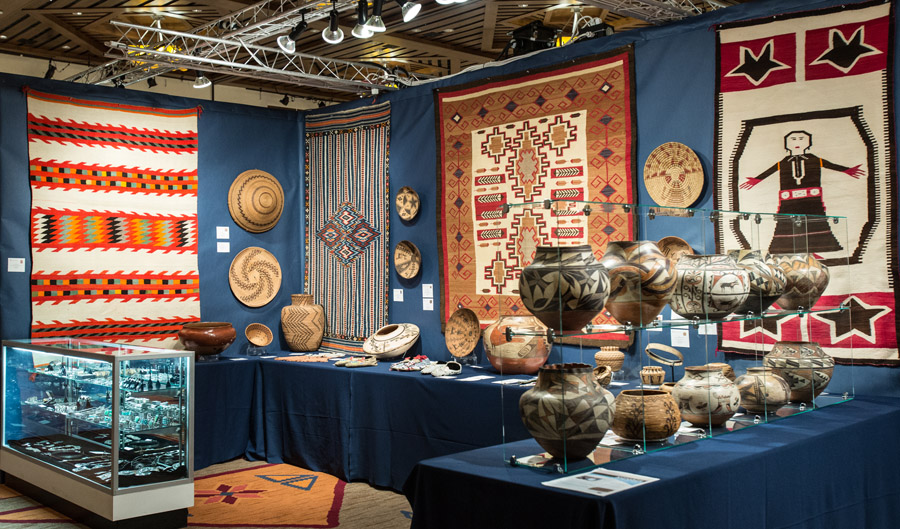The National Museum of the American Indian is celebrating its founding in 1989 and its New York City location at the Customs House with a 20th Anniversary Gala and new exhibit.
We have a Facebook page!
We now have a Facebook page. To see it, you can click the little f in a blue circle above the contact section of our home page on our website. Alternatively, you can enter in the address bar:
https://www.facebook.com/pages/Marcy-Burns-American-Indian-Arts-LLC/730878460292438
In addition to posting our monthly newsletter releases, we plan on entering information about recent acquisitions, exhibits, museum exhibits etc.
Please "Like" us on our Facebook page. This will help other people discover Marcy Burns American Indian Arts.
Delaware Antiques Show 2014
The Delaware Show is fast approaching. This year is the 51st year of the show (!), clearly making it one of the oldest American antiques show in the country, and it is thriving! The show opens on November 6th for a charity preview and continues with regular admission November 7-9, 2014.
The show is owned and sponsored by Winterthur Museum, which has one of the great collections of American decorative arts. Plan on combining a visit to the Museum with a visit to the show!
Navajo (Dine') concho belts
Third Phase concho belt
Navajo concho belts 1930-1960
Navajo concho belt, 1920s-1930s with repousse' and turquoise
1930s concho belt with arrows...probably made for Fred Harvey shops that were in the railroad stations
Navajo concho belt, mid-20th century or possibly earlier.
Navajo concho belt 1930s-1950s
The Navajo (Dine') learned how to work silver in the mid-nineteenth century. They had long appreciated silver jewelry that they acquired from Southwestern Hispanics and Plains tribes but it is generally believed that they did not learn how to make metal jewelry until circa 1850 when Atsidi Sani became friends with a Mexican smith named Nakai Tsosi. Tsosi taught him how to work iron so that he could make bridles that he could sell to other Navajo. After the end of the Navajos' internment at Bosque Redondo near Fort Sumner in 1868, Nakai Tsosi taught Atsidi Sani how to smith silver for jewelry. He, in turn, taught his sons and other Navajos.
Another silversmith, Atsidi Chon, went to Zuni in 1872, where he taught Lanyade how to work silver. Other men in turn taught silversmithing in the 1870s to men in Acoma, Laguna, and Isleta.
One of the earliest forms of silver jewelry that the Navajo made were "conchos", also called "conchas", worn on leather belts. The form derives from Ute conchos that were worn as hair ornaments or long drops hanging from belts. By the late 19th century, the Navajo began to set stone in the conches. These belts went on to become iconic and they continue to be made today.
The earliest concho belts were made out of hammered coin silver. Their designs progress through stages, beginning with an oval shape that was scalloped on the edges, elementary stamping and chiseling. The center of the First Phase concho was an open diamond or oval and the back had a copper loop through which a leather belt could pass.
As time went on, the designs became more elaborate. Note the Navajo concho belt that is pictured to the left: The center of the concho is now pushed out through repousse' work and the center of the concho is closed. In addition, a fine turquoise square stone has been added to the center. The concho is backed in some instances such as this with a leather backing.
The railroads arrived in the Southwest in the 1880s. The Fred Harvey Company opened shops in the railroad stations and provided a ready market for Navajo silver. As a result, silver smithing flourished and designs were elaborated, often reflecting Anglo taste. The concho belt to the left has arrows that are intricately worked into the design, an example of some of the high-quality Fred Harvey jewelry that was offered.
Concho belts continue to be worn and valued by the Navajo and Anglos alike. Quality work continues into contemporary times with a continuation and development of traditional designs. The belt to the left has beautiful repousse', wirework, and quality turquoise stones. It is hard to definitively date it.
During the Depression through World War II and into the 1950s, the Navajo made concho belts that were not on leather, perhaps because of a shortage of leather. They are made out of sterling silver. They were made for sale. Most women had small waists at that time; thus many people wear this style as a necklace today.
Additional photos from Santa Fe Whitehawk Show 2014
Santa Fe Show had active buying
I am happy to report that the 2014 Whitehawk Show was well attended by collectors and sales were strong. There was a buzz on the floor of the show from the moment it opened and dealers were smiling. I sold pottery, baskets, beadwork and jewelry. Thanks to all who came and who bought!
Updating the Lanmon Collection consignment to Marcy Burns American Indian Arts: By the end of the show, there was only one pot that remained unsold. Over the course of the one year consignment period, I sold 16 out of the 17 pots. Dwight and Lorri Lanmon and I are very pleased that these important Historic pots have found good homes.
Marcy Burns American Indian Art booth at Whitehawk Antique Indian and Ethnographic Show 2014
Welcome to our new Website and Blog!
As we launch our newly designed website, we want to encourage you to follow our new "Blog". We will try to keep you informed about new postings to our website, new exhibits and books that we become aware of, and happenings in the world of antique Native American arts. Of course, we will also let you know about our upcoming show schedule.
For those of you who are just meeting us, Marcy Burns American Indian Arts LLC is a leading source of antique American Indian basketry, textiles, pottery and jewelry. In addition, we offer vintage jewelry from Taxco, Mexico. We are proud of our fine reputation and our long-standing history of offering quality antique Native American art that is fully warranted. To learn more about us, please go to our website (www.marcyburns.com) and click "About Marcy Burns"
Whitehawk Antique Indian and Ethnographic Art Show 2014
Marcy Burns American Indian Arts LLC will once again be participating in the Whitehawk Antique Indian and Ethnographic Art Show, which is held in Santa Fe every year. This is the oldest and finest antique fair in the nation that focuses on the sale of antique Native American art. This year it will also include quality dealers who specialize in Ethnographic Art.
Antique Native American Basketry of Western North America
We are thrilled to announce the publication of Antique Native American Basketry of Western North America, A Comprehensive Guide to Identification by John Kania and Alan Blaugrund. Just released, this book is a comprehensive analysis of Native American Western basketry, complemented by 150 color photographs, 21 maps, and diagnostic tools.
We have been waiting with great anticipation for the publication of this very important book. Native American literature has been lacking diagnostic methodology of Western American Indian basketry. Antique Native American Basketry of North America fills a much needed gap...













